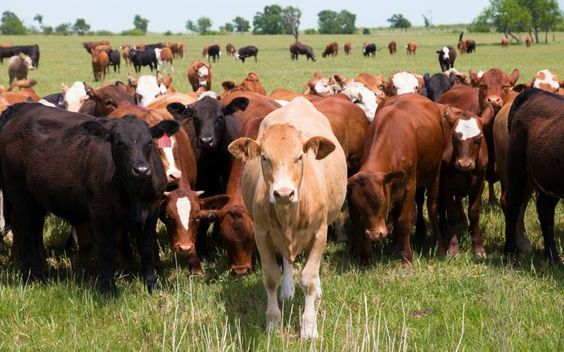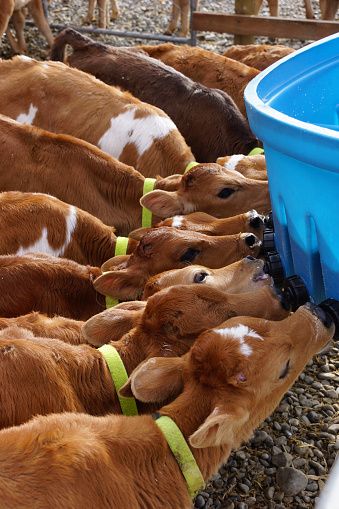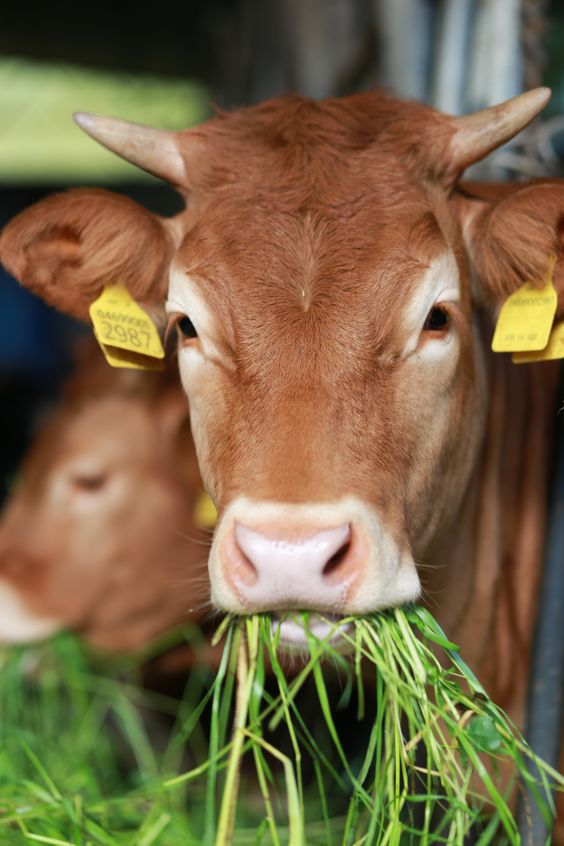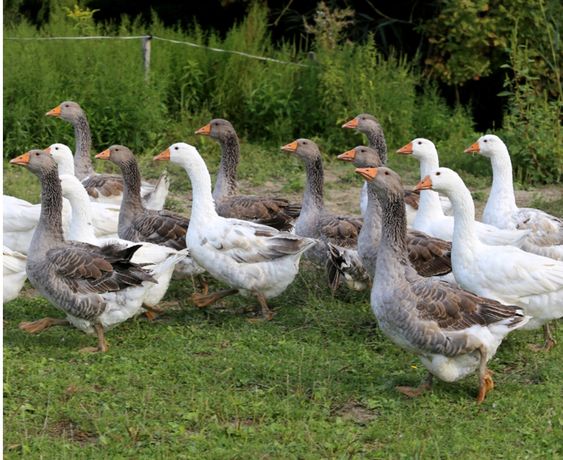Cattle Farming: A Comprehensive Guide to Successful Cattle Production
Cattle farming, a cornerstone of agricultural economies worldwide, involves the breeding, rearing, and management of cattle for various purposes. Primarily, cattle are raised for meat (beef), milk, and byproducts such as leather and hides. The practice has evolved over centuries, adapting to technological advancements and changing consumer demands.
At its core, cattle farming is a delicate balance of science and art. It requires a deep understanding of animal behavior, nutrition, reproduction, and health. Farmers must also possess strong business acumen to manage resources efficiently and adapt to market fluctuations.
Benefits of Cattle Farming
- Economic Impact: Cattle farming is a significant contributor to rural economies, providing employment opportunities and stimulating related industries such as feed production, transportation, and processing.
- Food Security: Cattle products, including meat and dairy, are essential components of human diets, providing vital nutrients for populations worldwide.
- Byproduct Utilization: Cattle farming generates valuable byproducts such as leather, hides, and tallow, which are used in various industries.
- Land Management: In many regions, cattle grazing helps maintain grassland ecosystems and prevent land degradation.
Goals of Cattle Farming
The overarching goal of cattle farming is to produce high-quality animals efficiently and sustainably. Specific objectives include:
- Optimizing Production: Maximizing meat or milk yield while maintaining animal welfare standards.
- Improving Efficiency: Reducing production costs through better feed utilization, disease prevention, and resource management.
- Ensuring Sustainability: Adopting practices that protect the environment, conserve natural resources, and promote biodiversity.
- Animal Welfare: Prioritizing the well-being of cattle through proper housing, nutrition, and healthcare.
Key Components of Cattle Farming
Cattle farming encompasses several interconnected components:
- Breeding: Selecting and mating cattle with desirable traits to improve herd genetics.
- Nutrition: Providing balanced diets to meet the nutritional needs of cattle at different life stages.
- Health Management: Implementing preventive healthcare measures and treating diseases promptly.
- Reproduction: Managing breeding cycles to optimize calf production.
- Housing and Facilities: Providing suitable shelter and infrastructure for cattle comfort and productivity.
- Market and Economics: Understanding market trends, pricing, and financial management.
Types of Cattle Farming
- Beef Cattle Farming: Raising cattle primarily for meat production.
- Dairy Cattle Farming: Focusing on milk production and related products.
-
Dual-Purpose Cattle Farming: Combining beef and milk production.
- Pasture-Raised Cattle Farming: Relying on natural grasslands for grazing.
- Feedlot Cattle Farming: Confining cattle in feedlots for intensive feeding and rapid growth.
Challenges and Opportunities
Cattle farming faces various challenges, including climate change, disease outbreaks, market volatility, and consumer concerns about animal welfare and environmental impact. However, it also presents opportunities for innovation, technological advancements, and the development of sustainable practices.
Ideas for Improving Cattle Farming
- Precision Agriculture: Utilizing technology to optimize resource use and monitor animal health.
- Sustainable Practices: Adopting environmentally friendly methods, such as rotational grazing and reducing greenhouse gas emissions.
- Animal Welfare Focus: Prioritizing the well-being of cattle through enrichment programs and humane handling.
- Value-Added Products: Developing new products from cattle byproducts to increase farm income.
- Market Diversification: Exploring different markets and consumer preferences to reduce risk.
The Cattle Animal
A fundamental aspect of successful cattle farming is a deep understanding of the animal itself. Cattle are ruminants, meaning they have a complex digestive system capable of breaking down tough plant matter. This biological adaptation allows them to thrive on diets that would be unsuitable for other animals.
- Breeds: Cattle breeds exhibit a wide range of characteristics, including size, temperament, milk production, and meat quality. Understanding the strengths and weaknesses of different breeds is crucial for selecting animals that align with specific farming goals.
- Behavior: Cattle are herd animals with complex social structures. Recognizing their natural behaviors can significantly impact herd management and animal welfare.
- Health and Reproduction: A comprehensive knowledge of cattle health, including common diseases, vaccinations, and reproductive cycles, is essential for maintaining a productive and healthy herd.
Nutrition: Fueling for Productivity
Proper nutrition is the cornerstone of cattle health and performance. A balanced diet provides the necessary nutrients for growth, milk production, and reproduction.
- Forage: Grass and hay are the primary components of cattle diets. The quality and quantity of forage directly impact animal performance.
- Supplements: Depending on the stage of production, cattle may require additional supplements, such as minerals and vitamins.
- Feed Conversion Efficiency: Maximizing the efficiency with which feed is converted into meat or milk is a key goal of cattle nutrition.
Cattle Housing and Facilities
The design and management of cattle housing and facilities significantly influence animal comfort, health, and productivity.
- Barn Design: Considerations include ventilation, lighting, and space requirements for different age groups and production systems.
- Pasture Management: Proper pasture rotation and fertilization are crucial for maintaining forage quality and preventing overgrazing.
- Equipment: Modern farming relies on various equipment for feeding, milking, and handling cattle. Understanding the available options and their proper use is essential.
Reproduction and Breeding
Effective reproduction management is vital for herd growth and genetic improvement.
- Breeding Systems: Different breeding systems, such as artificial insemination and natural service, have their advantages and disadvantages.
- Calving Management: Proper care of cows during calving and newborn calves is essential for survival and healthy growth.
- Genetic Improvement: Selecting animals with desirable traits and utilizing advanced breeding technologies can enhance herd productivity.
Disease Prevention and Control
A proactive approach to disease prevention is crucial for maintaining herd health and profitability.
- Biosecurity: Implementing strict biosecurity measures helps prevent the introduction of diseases onto the farm.
- Vaccination Programs: Regular vaccination is essential for protecting cattle from common diseases.
- Early Detection: Promptly identifying and treating sick animals can limit the spread of disease.
Financial Management
Successful cattle farming requires sound financial management.
- Budgeting: Developing a comprehensive budget is essential for tracking income, expenses, and profitability.
- Market Analysis: Understanding market trends for cattle and cattle products is crucial for making informed business decisions.
- Risk Management: Implementing strategies to mitigate financial risks, such as insurance and hedging, is important.
Environmental Stewardship
Modern cattle farming emphasizes sustainability and environmental responsibility.
- Land Management: Adopting practices that protect soil and water resources is essential for long-term farm viability.
- Waste Management: Proper management of manure and other waste products is crucial for environmental protection.
- Carbon Footprint: Reducing the carbon footprint of cattle production is a growing priority.
Cattle farming is a complex and multifaceted endeavor that requires a combination of knowledge, skills, and dedication. By understanding the various components of cattle production and adopting sustainable practices, farmers can contribute to a thriving and resilient industry while meeting the growing demand for cattle products.






